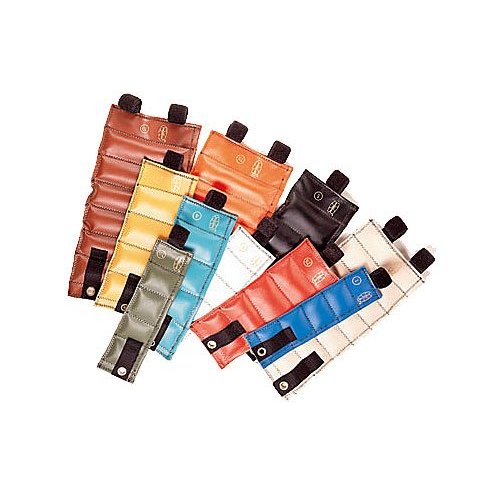I used to think that weight was bad, and money was good, so that proper unicycle design would be a simple matter of striking a balance between the two.
Pedal weight is the worst, because it rotates out of balance. Crank weight is second worst, for the same reason, only less so, because it’s closer to the center.
Frame weight sucks, because it just pulls you down, but at least it just pulls down, and not down and to the side, like pedal- crank weight.
Certainly hub and rim- tire weight must be bad in many cases. Cranks spins and jumping would seem easier with a lighter wheel set.
But what about a 36 commuter ? I got this idea with these wrist weight straps someone left in my yard. They look like the picture. Together all 3 weighted 4 lbs. I strapped them around 3 spokes and tightened the Velcro, right at the rim. There was 9 spokes between each of the weights, to achieve balance. Installation time, 3 minutes. 
I have just came back from a 2 hr. ride. I fully expected this to be a bad idea, but it was free and easy, I couldn’t resist just seeing how bad it was.
Actually I like it ! It was very much like an unweighted wheel. I got used to the slower turning pretty quick.
There was some very real advantages. I could ride faster with less concentration. Hard pedal inputs have less effect. The uni tracks straighter. Balance, no doubt due to the gyro effect, was helpfully improved. I could easily ride with both hands on the saddle, something I never much tried before. It had the effect of transforming me into a smoother rider who could pedal harder and straighter with less effort, and better balance.
I’m not saying this is for everyone, but 36 riders, and maybe 29’ers might like to try this. I’m going to leave the weights on for now. I’d try more weight if I had them !
I guess I’ll go to more fat girl’s garage sales. 
